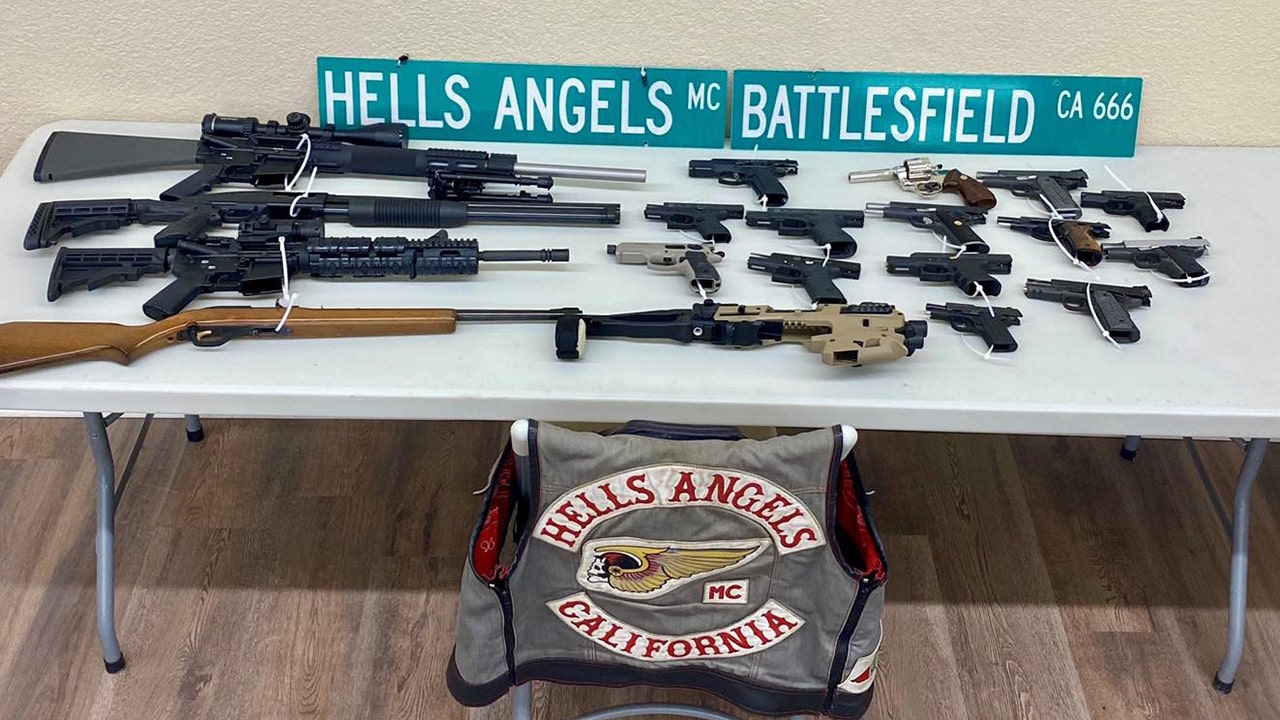A few years ago, FN chose to discontinue the long serving High Power, most often called the Browning Hi-Power. This was a result of lagging sales in a pistol that had become more and more expensive to manufacture. Shortly afterward, Springfield introduced the excellent SA 35 pistol, a close clone of the original. Girsan of Turkey also offers a Hi-Power clone. The Girsan MC 35 pistol has been well received and is competitive to say the least with any Hi-Power pistol including the original.
The Browning Hi-Power, introduced in 1935, was the first high-capacity 9mm pistol. A double-column magazine, single-action trigger, and sturdy construction are hallmarks of the Hi-Power. The pistol went on to be adopted by the armed services of more than 100 nations. It also fought in many wars often — on both sides.

The pistol is still in use by allies and adversaries. Good work has been done with the Hi-Power in military use and by special teams. The fictional Reddington carries a Hi-Power in the Blacklist and noted NYPD detective Frank Serpico carried a Browning Hi-Power 9mm.
The Girsan Hi-Power is faithful to the original in most models, but there are also improved models with a straight trigger, light rail, and other features. Let’s look at one of the most interesting Hi-Power types.
While FN experimented with various Hi-Power models, including an aluminum frame version, most Hi-Power pistols were the usual five-inch barrel, steel-frame version. For some time, FM of Argentina offered a mix of clones of the FN pistol. Some were close copies, but most did away with the Hi-Power’s stepped slide in favor of a straight, non-contoured slide. This slide may have been stronger or simply easier to manufacture. FM pistols were generally serviceable and well made handguns.
MC 35 PI Features
Girsan has introduced a special short slide version of its Hi-Power called the PI. The PI is a neat-sized handgun, well balanced, and suitable for concealed carry.
The pistol features a full-size frame holding the new MecGar 15-round magazine, versus the original Browning 13-round magazine. The pistol features a 3.85-inch barrel. The weight is a nicely balanced 1.6 pounds. The pistol is listed in several versions including a black model that looks all business. My example features a Titanium finish slide.
The pistol is a MKII Hi-Power in the particulars, featuring an ambidextrous safety and high-visibility Novak type three dot sights. The safety is positive in operation featuring a sharp indent. The original Hi-Power safety is too small for easy manipulation and right-hand only. The MK II Hi-Power solved those problems.
The grips are a G10 type with plenty of abrasion and adhesion. The MC 35 is delivered with the original magazine safety. This prevents the pistol from firing when the magazine is removed. This safety is criticized in some quarters, praised in a few, and many feel neutral. I think that the magazine safety may serve a purpose for some of us.
The original Hi-Power magazine safety was easily removed. By contrast, the MK II procedure is more involved and may result in a failure to fire and a need to replace the trigger spring. That said, the removal of the magazine safety usually results in a lighter trigger action.
I chose to leave the grip safety intact and deal with the 7-pound trigger action. Keep a firm grip, press the trigger straight to the rear, and you’ll have a hit. The pistol is delivered with a single magazine, par for the course these days. I collected a good supply of ammunition and headed to the range.
Test Gun Specs
Caliber: 9mm
Capacity: 15+1 rounds
Barrel length: 3.88 inches
Overall length: 6.25 inches
Weight: 1.6 pounds
Range Test
Since the 1935-era High Power models like lubrication, I heavily lubricated the pistol for a break-in run. As many of you know, there is really nothing like Ballistol. I fired Fiocchi Range Dynamics ammunition in both 115- and 147-grain weight. If you are used to polymer-frame pistols the first impression is that the MC 35 is a light kicker — a very light kicker. Part of this sensation is from weight and balance and part from the recoil spring setup.
This is a controllable pistol. I managed the trigger well, although it took some acclimation. I recommend a 400-round dry fire regimen spread out over several days to achieve good control over the trigger. There is no other way. A better way is more dry fire!
The pistol is fast on target and fast to get good hits. I fired at man-sized targets at 5, 7, and 10 yards getting good hits in the X-ring. There were no failures to feed, chamber, fire, or eject. The Fiocchi loads were accurate and clean burning. The 147-grain load produced notably less recoil. After two range sessions and more dry fire, I felt confident to try a benchrest at 15 yards. Results were good to very good.
Fiocchi 124-grain FMJ and Fiocchi 147-grain JHP Defense Dynamics loads were used. Accuracy was good with each load averaging 1.9 to 2.2 inches. The pistol is clearly accurate, reliable, and well suited to defense. Carried cocked and locked, the PI 9mm is fast to an accurate first shot.
Holster Selection
In a proper holster, the pistol is concealable. I obtained a Galco Tuck-N-Go holster. Suitable to be carried under a tucked-in shirt or inside the waistband, this is a well-designed holster. I own in several variants of the holster. The Tuck-N-Go offers a balance of security and speed, and rides comfortably when properly adjusted. I ordered an example for the 1911 Commander, and it was a perfect fit for the Girsan MC 35 PI.
Ammunition Selection
Ammunition selection is serious business, and ammunition for personal defense must be carefully considered. The more I explore the benefits of solid copper projectiles, the more I am impressed. Among the brands I have tested with excellent results is D9 Defense. I was able to put several of its loads to the test. Reliability was good without a single failure to feed, chamber, fire, or eject in firing the 80-grain load in both standard pressure and +P variants. Let’s look at some of the information supplied by the makers of D9 9mm ammunition.
This category of bullets is characterized by solid metal projectiles with flutes or grooves along their surface that do not expand upon impact. Instead, the design aims to inflict damage through fluid transfer, utilizing the Venturi effect — a phenomenon where the flow of a fluid speeds up as it passes through a narrow space, resulting in a decrease in pressure and an increase in velocity of the fluid.
When these bullets hit a target, the design of the flutes force liquified tissue to accelerate and be directed into surrounding tissue with high velocity, causing more extensive damage. This is significantly more effective at transferring destructive energy than any traditional hollow point, full metal jacket, frangible, or tumble-upon-impact projectile.
The efficiency of these bullets in causing damage depends on several factors:
- Surface Area: The amount of liquified tissue that can be directed into surrounding areas impacts the level of damage. A bullet with a larger frontal area can transfer more tissue.
- Projectile Design: The design of the bullet’s flutes affects concentration and the angle the fluid transfer is directed. Enhanced flute designs result in more damage by focusing the liquid more tightly and propelling it away from the bullet at high speeds. This sets D9’s designs apart from similar appearing rounds on the market.
- Projectile Velocity: Faster bullets create faster cast-off, increasing the extent of the damage. Velocity’s effect on wound volume is less drastic than velocity’s effect on penetration depth.
Comparison of Reliability Against Hollow Points
Reliability and Consistency
- Hollow Point: Achieve expansion in human targets only 60–70% of the time, with a notable failure rate influenced by obstacles such as clothing fibers and bone. Optimal performance is limited to a velocity range of 900–1,100 fps, with increased failures noted outside this range due to fragmentation and jacket separation.
- Shape Charge: Displays exceptional reliability with less than 5% deviation in penetration and wound dimensions. Changes in velocity cannot reduce reliability, because the projectile does not need to change shape to function. Through clothing and bone, the projectile remains undegraded.
Barrier Performance
- Hollow Point: Experience a broad range of effectiveness reduction, typically 20–30% after encountering light domestic barriers, with a dramatic capability decrease (>90%) when facing heavy barriers. Against heavy barriers, a 30% deflection rate and over 60% failure rate are observed.
- Shape Charge: Show minimal degradation in effectiveness (~8% average across all manufacturers, <5% for G9 designs) against light barriers and maintain their course without deviation through heavy barriers, highlighting their superior barrier penetration capabilities. Deflection in glass and other hard barriers is greatly reduced.
I don’t have an argument with the claims made by the company — testing bears out the claims. I will let the ammunition and results obtained in testing be their own advocate. I deploy a broad range of expanding ammunition for different chores. Based on predicted performance, the D9 loads offer a good choice in today’s world.
You make the call. Is the Girsan MC 35 PI worthy of being called a Hi-Power? Share your review in the Comment section.
Read the full article here





